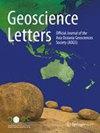基于USLE和GIS技术的埃塞俄比亚阿瓦什河Ada 'a流域土壤侵蚀模型及输沙指数分析
IF 4.3
3区 地球科学
Q1 GEOSCIENCES, MULTIDISCIPLINARY
引用次数: 0
摘要
埃塞俄比亚在防治土壤侵蚀方面面临重大挑战。本研究解决了阿瓦什河流域Ada 'a流域的问题。利用GIS和通用土壤流失方程(USLE)模型对阿瓦什河Ada’a流域的土壤流失量和输沙指数(STI)进行了预测。RUSLE模型需要连续记录30分钟的强降雨数据,由于该降雨数据不可用,首选USLE模型。此外,选择USLE模型是因为它的方法简单,数据可访问性好。该研究的目的是确定年平均土壤流失率,STI,并确定最重要的水土流失易发点并对其进行排名,以进行土壤保持规划。利用ArcGIS环境下的交互式空间分析工具地图代数栅格计算器(Spatial Analyst Tool Map Algebra Raster Calculator),通过乘以相应的USLE因子值(R、K、LS、C和P),基于栅格单元估算年平均土壤流失量,并在ArcGIS中的栅格计算器(Raster Calculator)上利用流量累积和坡度计算STI。结果表明,流域R、K、LS、C和P因子值分别为344.9 ~ 879.65 MJ mm h−1年−1、0.11 ~ 0.38、0% ~ 22.23%、0 ~ 1和0.55 ~ 1。流域年总体土壤流失量为0 ~ 457.4 t / h−1年−1年。输沙指数范围为0 ~ 856.193。结果表明,土壤流失率和沉积物以惊人的速度增加。土壤流失率最高的是流域最低的部分。因此,强烈建议建立基于地形和土地利用类型的可持续侵蚀控制机制,特别是在流域上部。本文章由计算机程序翻译,如有差异,请以英文原文为准。
Soil erosion modeling and sediment transport index analysis using USLE and GIS techniques in Ada’a watershed, Awash River Basin, Ethiopia
Ethiopia faces a significant challenge in combating soil erosion. This study addresses the concern within Ada’a watershed of the Awash River basin. GIS and the Universal Soil Loss Equation (USLE) Model were used to predict soil loss and the sediment transport index (STI) in the Ada’a watershed of the Awash River basin. RUSLE model required intensive rainfall data registered continuously for 30 min, due to unavailability of this Rainfall data USLE model were preferred. Moreover, USLE model was chosen because of its straightforward methodology and accessibility to data. The study's objectives were to determine the mean annual soil loss rate, STI, and to identify and rank the most important erosion-prone spots for soil conservation planning. Using the interactive Spatial Analyst Tool Map Algebra Raster Calculator in the ArcGIS environment, the mean annual soil loss was estimated based on grid cells by multiplying the corresponding USLE factor values (R, K, LS, C, and P). The STI was also calculated on the Raster Calculator in ArcGIS using flow accumulation and slope gradients. The result shows that R, K, LS, C, and P factor values were estimated in the watershed as 344.9 to 879.65 MJ mm h−1 year−1, 0.11 to 0.38, 0% to 22.23%, 0 to 1, and 0.55 to 1, respectively. The overall annual soil loss in the watershed ranged from 0 to 457.4 tons ha−1 year−1. The Sediment Transport Index ranges from 0 to 856.193. The result implies there is increasing rate of soil losses and sediments observed at alarming rate. The highest rate of soil loss was found in the watershed’s lowest parts. Accordingly, sustainable erosion control mechanisms based on topography and land use types are highly recommended, especially in the upper part of the watershed.
求助全文
通过发布文献求助,成功后即可免费获取论文全文。
去求助
来源期刊

Geoscience Letters
Earth and Planetary Sciences-General Earth and Planetary Sciences
CiteScore
4.90
自引率
2.50%
发文量
42
审稿时长
25 weeks
期刊介绍:
Geoscience Letters is the official journal of the Asia Oceania Geosciences Society, and a fully open access journal published under the SpringerOpen brand. The journal publishes original, innovative and timely research letter articles and concise reviews on studies of the Earth and its environment, the planetary and space sciences. Contributions reflect the eight scientific sections of the AOGS: Atmospheric Sciences, Biogeosciences, Hydrological Sciences, Interdisciplinary Geosciences, Ocean Sciences, Planetary Sciences, Solar and Terrestrial Sciences, and Solid Earth Sciences. Geoscience Letters focuses on cutting-edge fundamental and applied research in the broad field of the geosciences, including the applications of geoscience research to societal problems. This journal is Open Access, providing rapid electronic publication of high-quality, peer-reviewed scientific contributions.
 求助内容:
求助内容: 应助结果提醒方式:
应助结果提醒方式:


